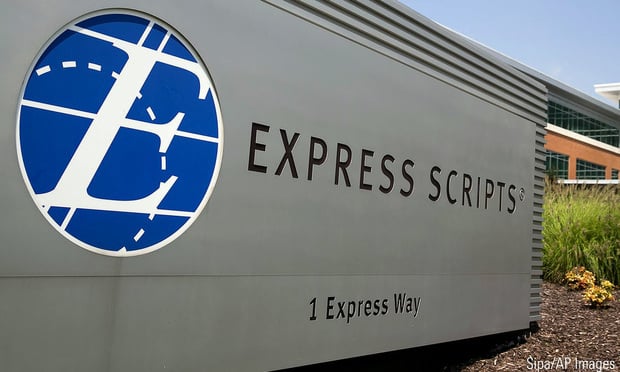 Credit: The White House via Wikimedia Commons
Credit: The White House via Wikimedia Commons
Escalating health care costs remain one of the most pressing challenges for employers and self-insured plans offering health benefits. Lack of pricing clarity fuels rising expenses, billing disputes and strained budgets. The recent Healthcare Price Transparency Executive Order seeks to address these issues by mandating that hospitals and insurers disclose actual health care prices—not estimates—with standardized, enforceable reporting.
For plan sponsors, this order has far-reaching implications, offering opportunities to manage costs more effectively, enhance plan sustainability and deliver clearer value to employees.
Recommended For You
Addressing long standing transparency gaps
Previous federal mandates, including Executive Order 13877 in 2019, aimed to improve health care price transparency but saw limited success. Fewer than a quarter of hospitals have fully complied, often masking actual costs behind complex pricing schemes and partial disclosures.
This lack of consistency weakens the policy’s effectiveness and creates ripple effects throughout the system. Without clear, standardized pricing data, self-funded plans and insurers face difficulty negotiating fees and adjudicating claims. Employees are left unable to compare costs or anticipate their out-of-pocket expenses as opaque billing processes add layers of administrative burden, complicating claims management and increasing the risk of disputes.
The latest Executive Order closes these gaps by mandating that hospitals and insurers publish actual, itemized prices in a uniform format. It also strengthens compliance through tougher enforcement measures and financial penalties for those who fail to meet the requirements.
What the executive order means for employers and self-funded health plans
For employers and self-funded plans, the new transparency mandates offer several key advantages, reshaping how health care costs are managed and controlled.
First, it strengthens cost management.
Clear, enforceable pricing disclosures give plan sponsors unprecedented visibility into actual negotiated rates. With access to this data, employers can identify excessive markups, spot discrepancies in provider billing and benchmark costs against competitors, Medicare rates or reference-based pricing models.
What was once a fixed, opaque expense becomes a manageable, negotiable line item—allowing employers to avoid inflated network fees and improve financial oversight.
Second, it supports long-term sustainability.
Rising health care costs have long threatened the viability of employer-sponsored benefits. In recent years, employers have absorbed these increases or shifted costs to employees through higher premiums and deductibles, undermining wage growth and workforce satisfaction.
Greater pricing transparency equips employers to avoid unnecessary overpayments, reduce year-over-year spending volatility and reallocate resources toward employee wages, retirement benefits or business reinvestment. It’s more than a compliance obligation. It offers a foundation for building a benefits structure that is financially stable and competitive.
Third, it opens the door to real cost reductions.
Research suggests that broad-based price transparency could lower health care costs by as much as 20% to 27% on commonly used services. Transparent pricing creates a competitive environment where hospitals and providers must justify their rates. For self-funded employers, this can translate into measurable savings without sacrificing access or quality of care.
Finally, it improves the employee experience.
While much of the focus is on employer cost control, the Executive Order also benefits employees. Standardized, upfront pricing tools—maintained by health plans—will give participants new visibility into what services will actually cost. Employees can compare rates for “shoppable” services before scheduling care, gaining greater predictability over their out-of-pocket expenses.
This transparency strengthens consumer engagement, especially for employees enrolled in high-deductible health plans or using Health Savings Accounts. Informed employees are less likely to face surprise medical bills and more likely to trust and value their benefits package.
Together, these changes represent a shift in how employers can approach health care purchasing, moving from reactive cost management to proactive control and decision-making.
Overcoming implementation challenges
Of course, achieving the intended outcomes will require overcoming existing hurdles:
- Provider resistance: Some hospitals and health systems may resist compliance, citing administrative burden or concerns over publicized rates affecting their competitive position.
- Data accuracy and standardization: Without stringent oversight, disclosures risk being incomplete, outdated or formatted inconsistently undermining comparability.
- Employee education: Simply publishing data won’t automatically empower participants. Employers will need to invest in communication strategies and decision-support tools to help employees navigate price information effectively.
Enforcement and accountability: Strengthening compliance
A key feature of the Executive Order is its stronger focus on enforcement. Compliance is no longer left to interpretation—hospitals and insurers that fail to meet disclosure requirements now face defined penalties.
This shift introduces real accountability, giving employers greater leverage when negotiating with providers. It makes price transparency more than a guideline, turning it into a clear, enforceable standard that drives real progress.
Ushering in a new era of price visibility
The Healthcare Price Transparency Executive Order marks a significant shift in how health care pricing is structured for employers and self-funded plans. It brings long-overdue clarity, predictability and fairness to a system often clouded by complexity.
For plan sponsors, this is more than regulatory compliance—it’s an opportunity to take control of rising health care costs, strengthen benefit offerings and improve workforce satisfaction. With stronger enforcement now in place, forward-thinking employers can turn transparency into a strategic advantage, transforming information into meaningful, cost-saving action.
Christine Cooper, founder and CEO of aequum LLC, is a transformative leader in the health care industry who is recognized for her pioneering spirit, dedication to positively move the needle for constituents in the self-insured community and assist and defend plans and patients. Cooper continues to bring technological advancements to the market space and has assembled a tech-driven team that effectively partners with TPAs, insurers, medical cost management companies and stop-loss carriers throughout the country.
© 2025 ALM Global, LLC, All Rights Reserved. Request academic re-use from www.copyright.com. All other uses, submit a request to [email protected]. For more information visit Asset & Logo Licensing.







